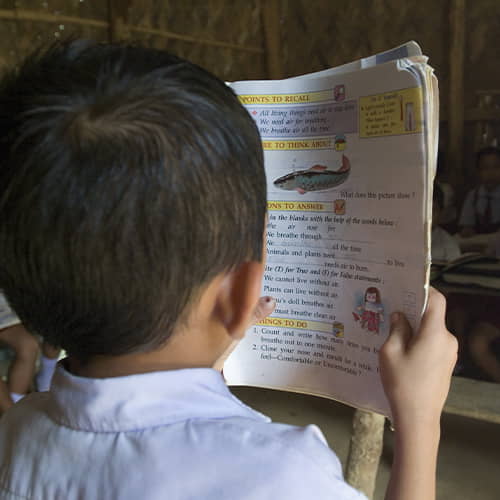What Are Child Labor Solutions?
Child labor is a serious concern; over 152 million children worldwide are victims of child labor.1 Children experiencing poverty are most at risk for becoming victims of child labor; poverty frequently causes child labor.
So how can we alleviate poverty to protect children from harsh working conditions? Child labor solutions might include providing food, resources for children to attend school or skills training for adults.
Between 720 and 811 million people do not receive adequate nutrition worldwide; a large number of these are children.2 Many impoverished families experience food insecurity because they cannot afford the nutritious food needed to promote their health or afford even enough food to survive.
Chickens, goats, and cows, among other animals, all offer families new sources of income that can help them buy necessities for their families. When animals help relieve the financial burden of food, medicine and housing expenses, extra help working to bring in income becomes less imperative, and families can afford to send their children to school.
Millions of children worldwide attend school infrequently or drop out entirely. Through education, children learn valuable skills, like literacy, math, and how to relate to others. These skills are vital to escaping poverty because they allow children to hope. If children can graduate from secondary school, that increases their chances of working jobs with better pay than their parents and even looking for better opportunities. Communities need to build, fund and staff quality schools. Additionally, families need money to pay for school tuition, uniforms, and supplies.
Skills training
Many adults did not regularly attend school or complete their education. Without proper education, many adults cannot qualify for good jobs or navigate daily tasks like signing documents or reading road signs. The World Bank notes that “One-third of the working-age population in low- and middle-income countries lack the basic skills required to get quality jobs, leaving them unable to achieve their full productive potential and limiting economic investment and growth.”3
Vocational training classes help adults develop knowledge and marketable skills in trades like candle making, fishing, welding and much more. Practical, marketable skills allow adults to create additional sources of income for themselves and their families.
Click here, to read more about this article.
Click here, to read more blogs in Gospel for Asia.Com


Comments
Post a Comment